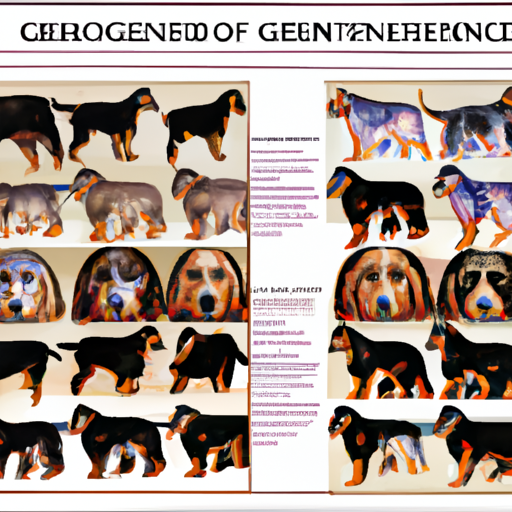In the world of dogs, you might have come across the term ‘inbred’. It’s a term that can evoke a variety of reactions. But what exactly does it mean for dogs? Let’s dive in and explore this topic in detail.
H2: Understanding the Concept of Inbreeding in Dogs
Inbreeding refers to the mating of two dogs that are closely related to each other. This could be siblings, parent and offspring, or cousins. Inbreeding is often used to maintain certain desirable traits within a breed, but it also carries significant risks.
Inbreeding results in offspring that have a higher chance of receiving identical copies of certain genes from both parents. This can lead to the dog exhibiting certain physical traits prominently. However, it also increases the chance of the dog inheriting genetic disorders.
H2: Reasons for Inbreeding Dogs
There are several reasons why some breeders might choose to inbreed their dogs:
- To maintain certain traits: If a dog has a desirable trait, breeders might inbreed to ensure that trait is passed on to the offspring.
- To create a new breed: Sometimes, inbreeding is used to establish a new breed with distinct characteristics.
- Due to limited gene pool: In some rare breeds, the gene pool may be very limited, leaving breeders with little choice but to inbreed.
However, these benefits come with significant risks.
H2: The Risks of Inbreeding in Dogs
Inbreeding can lead to a number of health and behavioral issues in dogs. These include:
- Increased risk of genetic disorders
- Lower fertility rates
- Shorter lifespan
- Behavioral issues such as anxiety or aggression
| Risks | Description |
|---|---|
| Genetic disorders | Genetic disorders are more likely to occur because of the lack of genetic diversity. |
| Fertility | Inbred dogs often have lower fertility rates, making it difficult for them to produce healthy offspring. |
| Lifespan | Studies have shown that inbred dogs generally have a shorter lifespan compared to non-inbred dogs. |
| Behavioral issues | Behavioral issues such as anxiety or aggression are more common in inbred dogs. |
H2: How to Avoid Inbreeding in Dogs
As a caregiver, there are steps you can take to avoid inbreeding in dogs:
- Purchase dogs from reputable breeders who prioritize health over specific traits.
- Consider adopting a mixed breed dog. Mixed breed dogs have a wider gene pool and are less likely to have the health issues associated with inbreeding.
- If you plan to breed your own dogs, work with a knowledgeable veterinarian or genetic counselor to avoid inbreeding.
FAQs
Q: Is inbreeding illegal?
A: Inbreeding itself is not illegal, but it is generally frowned upon due to the health risks it poses to dogs.
Q: Can inbred dogs be healthy?
A: While some inbred dogs may not show any apparent health issues, they are more susceptible to genetic disorders, fertility problems and behavioral issues.
Q: What breeds are most likely to be inbred?
A: Some purebred dogs are more likely to be inbred due to a limited gene pool. However, any breed can be inbred if close relatives are mated.
Q: How can I tell if a dog is inbred?
A: Genetic testing is the most reliable way to determine if a dog is inbred. Physical or behavioral abnormalities may also be signs.
Q: Can inbreeding be reversed?
A: While the effects of inbreeding cannot be reversed, future generations can be healthier through careful breeding practices.
By understanding and avoiding inbreeding, you play a role in promoting the health and well-being of dogs. It’s a responsibility that, as a caregiver, is truly invaluable.



